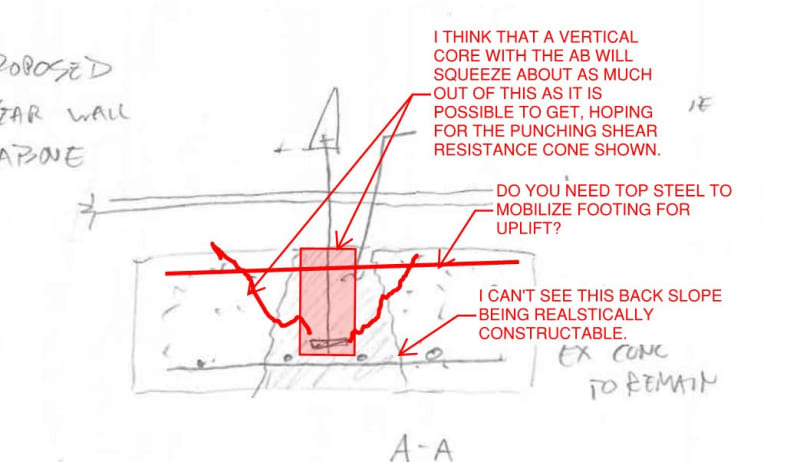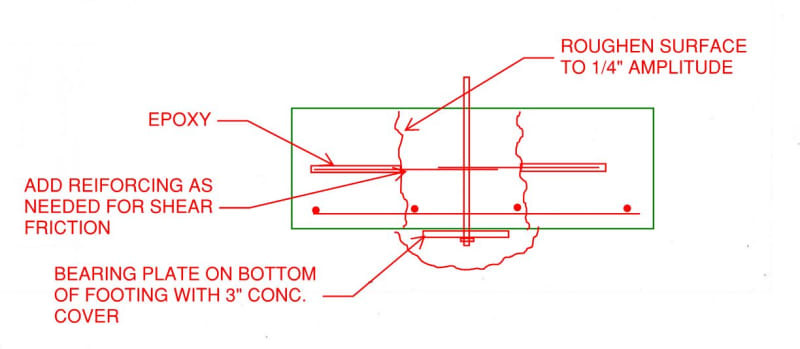radiocontrolhead
Structural
- Mar 4, 2017
- 95
Question all,
I'm trying to install a new hold down to an existing footing where an epoxy solution just wouldn't work (forces too high).
I'm toying around with the idea of having them chip away at the existing concrete (leaving all existing rebar in place and not to be cut). having them set the anchor rod and then pouring new concrete. embedment depth would be satisfied per design.
Has anyone done this?
The issue i have though is footing supports a post and it all might need to be shored while this takes place.
I'm trying to install a new hold down to an existing footing where an epoxy solution just wouldn't work (forces too high).
I'm toying around with the idea of having them chip away at the existing concrete (leaving all existing rebar in place and not to be cut). having them set the anchor rod and then pouring new concrete. embedment depth would be satisfied per design.
Has anyone done this?
The issue i have though is footing supports a post and it all might need to be shored while this takes place.


